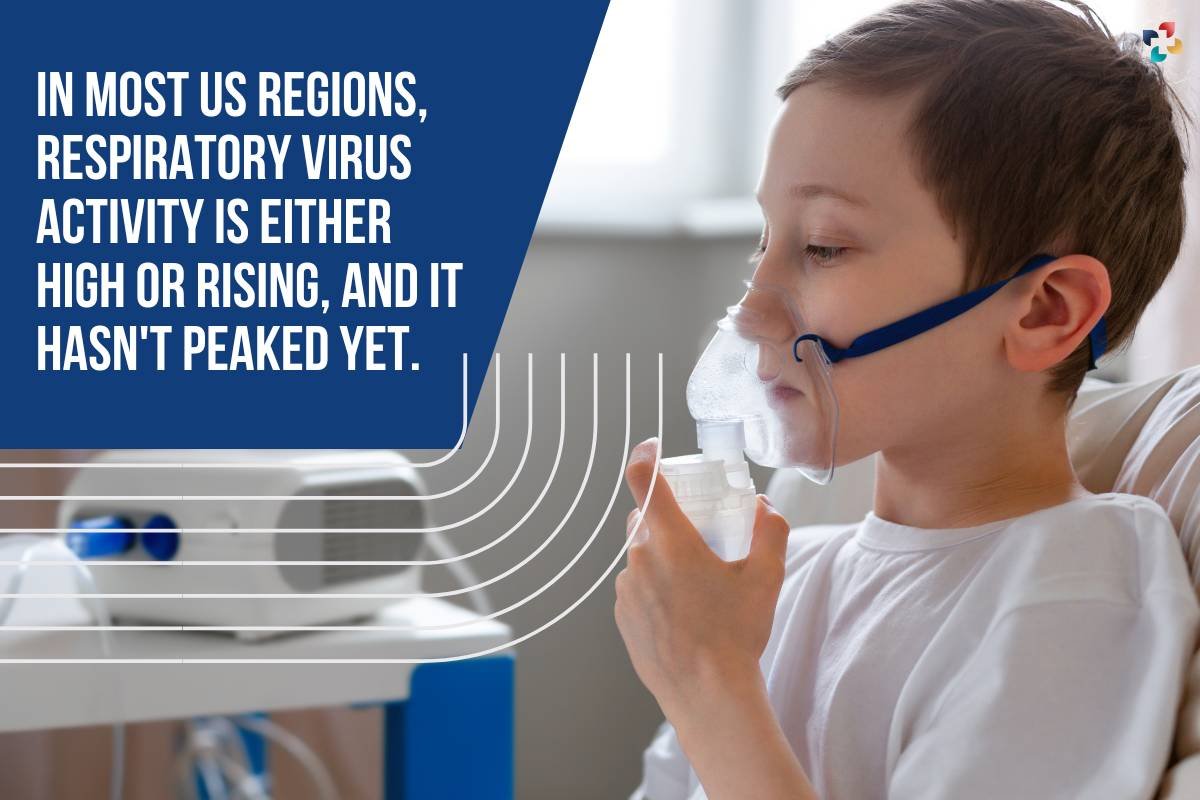The US Centres for Disease Control and Prevention caution that the peak of the respiratory virus season is still to come. The respiratory virus season is well under way in the US. Low vaccination rates put a lot of people at risk for serious illnesses and put additional load on the health care system.
Hospitalisations from COVID-19 are rapidly increasing. Public health experts have been monitoring an increase in children’s multisystem inflammatory syndrome (MIS-C), which is brought on by COVID-19, since the summer. The majority of the country is seeing an increase in influenza activity. RSV activity is still high in several regions, according to a Thursday update from the CDC on its website.
Children’s hospital beds are now almost as crowded in some areas of the nation as they were at this time last year. Hospitals and emergency rooms may once more be under stress by the end of this month if current patterns persist. Patients with various critical health issues may have delays in receiving care due to strain on the healthcare system.
Hospitalisations from flu are rising at the fastest rate
According to CDC data, there were more than 8 hospitalisations for respiratory viruses per 100,000 individuals in the US for the week ending November 25, which represents a 52% increase over the previous month. Hospitalisations due to flu and RSV are increasing more quickly, while Covid-19 still accounts for the majority of those cases.
Hospitalisations due to respiratory viruses have decreased by around 50% this season as compared to the same period last year. However, according to the CDC’s most recent projection, this season will see about the same number of hospitalisations as the previous one, with rates that are significantly higher than those of the seasons prior to the pandemic.
According to the CDC, vaccination is still the strongest defence against the catastrophic consequences of these viral respiratory infections for both you and your loved ones, and high vaccination rates might significantly lower the frequency of hospital admissions.
However, vaccination rates are still low, and in light of the rising prevalence of respiratory diseases, the CDC stated on Thursday that there is a “urgent need” to increase immunisation coverage.
Wherever viruses are proliferating
According to CDC data, flu-like activity is highest in the South but is high or moderate in over half of US states. For six weeks in a row, doctor visits for influenza-like illnesses, which present with symptoms such as fever, coughing, and sore throats, have exceeded the national baseline; they are currently over baseline in all ten geographic regions.
According to CDC estimates, at least 3.7 million cases, 38,000 hospital admissions, and 2,300 flu-related deaths have occurred this season.
The level of Covid-19 viral activity found in wastewater, which is a prime sign of transmission, is high and rapidly increasing across the country. The Midwest has the greatest levels, and according to CDC wastewater data, Covid-19 is spreading there more than it has since the Omicron wave two years ago.
There are indications that the US RSV epidemic may have peaked, as test positivity rates and ER visits have begun to decline. With the exception of the peak of the previous season, RSV hospitalisation rates are still greater than they have been over the previous five years.
This season, hospitalisation rates for respiratory viruses have been highest among seniors overall. Since the beginning of October, almost 230 out of every 100,000 adults 65 and older have been hospitalised due to RSV, flu, or Covid-19. However, small children have also reported high rates. Almost majority of the respiratory illnesses that hospitalised 33 out of every 100,000 children under the age of five in the week ending December 2 were caused by RSV.
In addition to immunisation, the CDC advises testing, treatment, and “everyday prevention measures” to help lessen the effect and transmission of sickness, such as concealing sneezes and coughs and staying at home while ill.
CDC Director Dr. Mandy Cohen stated at a Tuesday event, “These tools that protect us — vaccines… testing and treatment… washing hands… ventilation and masks — all of these things are layers of protection that help make sure that we can weather this season.”
Also Read: Dr. Wen’s Checkup: Understanding the Surge in Respiratory Illnesses in China







